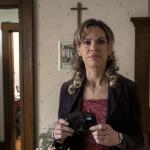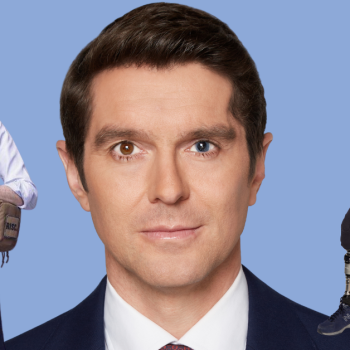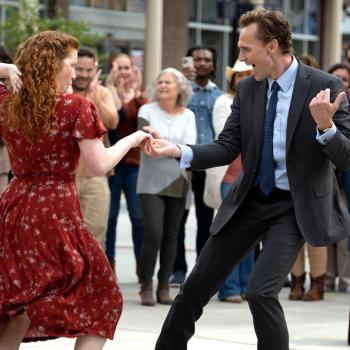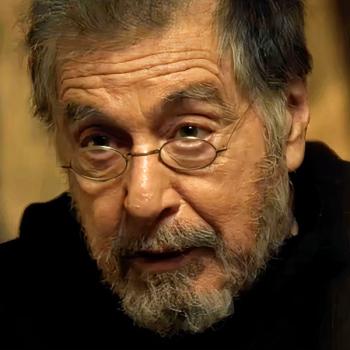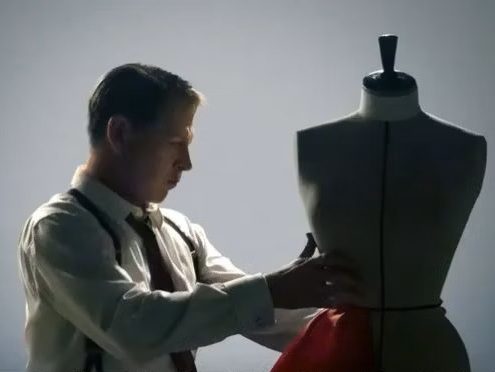
The New Look, which premiered Feb. 14 on AppleTV+ with three episodes of its total of 10, made me sad, but I also watched the screeners of every single episode.
That doesn’t happen often, especially with something I didn’t think I’d enjoy — like a series about the French high-fashion industry during wartime.
It follows the parallel, if seldom intersecting, stories of two French fashion icons during and right after World War II: Coco Chanel (Juliette Binoche), who is already established; and Christian Dior (Ben Mendelsohn), who has yet to open his own design house and is working for couturier Lucien Lelong (John Malkovich).
For those who know fashion, it is entertaining to see the young Turks of Paris before they made it big: Dior, Cristóbal Balenciaga, Pierre Cardin and Pierre Balmain.
There’s also an appearance by (Irish Catholic) Harpers Bazaar editor Carmel Snow (Glenn Close).
First, Why It Made Me Sad — Beauty
As anyone who sees videos of modern runway shows on social media, too much of what passes for fashion today is just silly. It barely qualifies as costuming, and its goal does not appear to make either men or women look good — and that starts with the models.
Usually long-limbed, rail-thin and sullen-looking (not their fault, they’re asked to affect that attitude), they’re used as human clothes racks and are buried under ugly or absurd garments, or painted like bizarre mannequins.
I’d post a video, but this is a family-friendly space. Just Google. They’re not hard to find. And don’t even get me started on celebs on red carpets, where less (fabric) is definitely considered more (as in bare skin and body parts).
But, every outfit I saw in The New Look — which are mostly vintage Dior — are stunning. The models themselves look beautiful, and the fashions accentuated both their femininity and their beauty.
Not everyone looks like a model or should, and beauty comes in many forms. But in a world that seems to celebrate aggressive attempts at ugliness — in fashion, architecture and what passes for modern art — it was refreshing to see artists reaching for the beautiful, especially amid and in the wake of war.
At the recent TV Critics Association Press Tour, Mendelsohn said of Dior (whose New Look can be seen here):
I think it’s at the very heart of his hope and his desire — a burning desire — to bring back something beautiful for him, for the world. And I think he had an awareness that it really, really could. And I think he did, I think he did it. And I think it was core to him — and they both changed the world and this world of fashion in such huge ways and in very distinct ways to each other.
Second, Why I Kept Watching — the Truth About Coco Chanel
These days, people are being canceled for ordinary human mistakes and made-up sins — and, even if they “repent,” forgiveness is rare.
But, as The New Look makes clear, Coco Chanel was, at best, a willing Nazi stooge, or, at worst, an enthusiastic collaborator — and an anti-Semite, to boot (ironically, her company is still privately held by the same Jewish family, the Wertheimers, who co-founded it with her in 1910).
She also participated in an espionage mission at the behest of German S.S. General Walter Schellenberg.
And yet, she remains a fashion icon, and sales of Chanel clothing and perfume continue brisk.
At TCA, series creator, executive producer, writer and director Todd A Kessler said:
Well, I can’t say why it’s not on specific people’s radars, but the history is that there was testimony given at the Nuremberg trials by Walter Schellenberg, and that testimony was sealed because he was providing so much information that they agreed to seal his testimony.
And that testimony wasn’t opened until 40 years later, so I think roughly 1987. And by then, many of the people that he had spoken about had passed away and it wasn’t really — it didn’t make much news at the time.
So that’s partly the reason why much of this story has been concealed and we’re telling a good portion of it for the first time. It’s definitely documented in books and now, we’re bringing it to life in The New Look.
The one bit of Chanel’s story that’s fanciful is her best buddy, Elsa Lombardi (Emily Mortimer). She shares a last name and bits of her story with British socialite Vera Bate Lombardi, but the biographies of the character and the real woman don’t quite match up. I suspect Elsa is more of a composite character.
You could say, Chanel was a woman in occupied Paris, what else could she do to survive (and wrest her company and money from the Wertheimers) other than become the lover of a Nazi diplomat and participate in secret Third Reich schemes?
And the Truth About Catherine Dior
What Chanel could have done is what Catherine Dior (Maisie Williams) did. If you’re asking who that is, I didn’t know, either. She was the beloved younger sister of Christian Dior — and a decorated member of the French Resistance.
Of course, that would have meant that Chanel couldn’t keep living in luxury hotels, in the style to which she’d become accustomed, and instead might wind up in a Nazi work camp.
Williams is a revelation in the role of Catherine, who showed great courage in the face of torture. At TCA, Willaims said:
I knew about the muses of Dior, and I think learning more about Catherine and her actual story, and realizing that this fashion house kind of was born from her being an original muse was so interesting to me. It felt kind of removed from my idea of Miss Dior.
But in terms of playing a hero, I think she had an incredible life. And in this story, I think she does become a person of hope in Dior’s life and someone who is sort of inherently good.
Third, Goodness, Not Always Where One Would Expect It
Today, fashion is often defined by decadence or even perversion (wonder what Balenciaga would think of his company’s recent bizarre advertising escapades, exploiting and sexualizing children).
But while Dior was gay, The New Look doesn’t dwell on that or exploit it for titillation.
I’ve seen several of Apple TV+’s period dramas lately (Masters of the Air, The New Look, the upcoming Manhunt and Franklin), and they’re very light on sexual content. What’s there is mainly hints and suggestiveness, without graphic sex scenes (but the occasional bit of profanity).
It certainly sets Apple TV+ apart from HBO, Showtime and other premium services. I hope it continues.
This isn’t to say that Dior’s sex life isn’t dealt with at all. There’s a constant presence of a long-suffering boyfriend, but it’s a low-key presentation.
Also — and who knows if this is truth or fantasy — the coterie of Paris designers at the time is seen as collegial, friendly and helpful to each other, rather than in ruthless competition.
Dior’s true love is directed toward his sister, who holds a central place in his heart. He’s portrayed as being a loyal brother and son, and also loyal to his mentor and fashion colleagues.
While his work for Lelong forced him to design for German officers’ wives, he resisted any direct contact with Nazis.
And, although Dior worried about his sister’s Resistance activities, he supported her.
And There Is Catholicism
The Dior family was Catholic, and there are small touches of that here and there through the series — and Christian is seen praying fervently at one point. Obviously, he lived as he wanted, but there’s no reason shown to assume his attachment to his faith wasn’t sincere, as far as it went.
According to an archival story from 1957, when Dior died of a heart attack at 52 in Italy, he received the Last Rites of the Church from the local priest.
Nowhere in The New Look is any Church figure shown deprecating or abusing Dior. Considering how often that happens surrounding sexuality on TV and in movies, I’m inclined to take its absence as a conscious choice.
Unfortunately, Dior was also very superstitious, depending heavily on tarot-card readers and clairvoyants.
The Relevance of the Seemingly Frivolous
Fashion may seem like a trivial thing, intended only for the rich. There is a scene in The New Look where someone comments that Dior wants to dress only 30 Paris women. But those 30 women supported not only Dior but everyone who worked with him, from fabric suppliers to seamstresses.
Ridiculous and excessive as they may look from the outside, obsessions of the wealthy like private planes, yachts, luxury homes, fancy purses, and haute couture provide livelihoods for thousands of ordinary folk. We all have our part to play in the economic ecosystem.
The New Look ends with a bit of a cliffhanger, and there is a chance of future episodes.
And a further look:
‘The New Look’/PHOTO: Apple TV+
Don’t miss a thing: Subscribe to all that I write at Authory.com/KateOHare.



